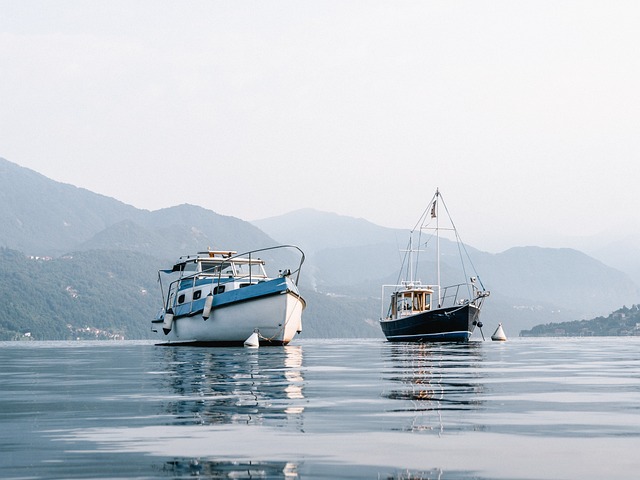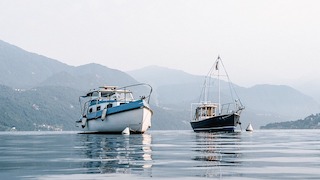Nov 13 (News On Japan) - As winter approaches, boat owners know it's time to prepare their vessels for the colder months. Winterizing is essential to ensure that your boat remains in excellent condition and safe from the harsh weather that can damage components and surfaces.

Without proper care, freezing temperatures, moisture, and lack of use can take a toll, leading to expensive repairs come spring. You might be wondering, "Should I shrink wrap my boat?" Shrink wrapping is a popular option, but it's just one part of a comprehensive winterization process. Let's dive into six practical ways to keep your boat in good condition through winter.
Shrink Wrapping
Shrink wrapping is a valuable option for many boat owners, especially in colder climates. When you shrink-wrap your boat, apply a durable plastic film over it and heat it to shrink tightly around its structure. This method provides a snug, protective barrier against snow, ice, and debris. It also minimizes exposure to moisture, which can prevent corrosion and mildew buildup on surfaces.
Shrink wrapping your boat can also add a layer of insulation, keeping temperatures inside the wrap slightly higher than the outside. This reduces the risk of freezing damage, especially for boats stored outdoors. While there is an upfront cost, shrink wrapping often saves money by preventing costly damage from harsh winter weather. If you do it yourself, ensure the wrap is applied correctly with no gaps or tears. Alternatively, you can hire a professional for a perfect, secure fit.
Thorough Cleaning and Drying
A thorough cleaning is crucial before storing your boat. Dirt, salt, and grime accumulating over the boating season can corrode metal parts and damage surfaces. Start by washing the exterior with a gentle soap that won't harm the paint or fibreglass. Pay special attention to areas exposed to saltwater, as salt is particularly corrosive.
Next, move to the interior. Clean all surfaces, including seats, storage compartments, and floors. Mildew and mould can develop in moist, dark environments, so it's essential to dry every area thoroughly. Remove any gear, cushions, and life jackets, as these items can trap moisture. Storing them separately in a dry area will help prevent mildew and keep them in good shape.
Finally, open any lockers, compartments, or drawers and let them air dry completely before closing. Leaving them open while in storage can also help prevent moisture buildup.
Draining Fluids
Water in your boat's systems during the winter can freeze and expand, leading to burst pipes, tanks, or pumps. Before storing your boat, it's essential to drain all water from its systems. This includes the bilge, freshwater tanks, and any plumbing lines. If your boat has a head or toilet, drain it entirely and add antifreeze to prevent any leftover water from freezing.
Antifreeze is also recommended for the engine and other systems that still contain water. Ensure you use a non-toxic marine-grade antifreeze designed specifically for boat systems. Once applied, the antifreeze will help protect against freezing damage while the boat is in storage.
This step is especially critical if your boat will be stored outdoors, where temperatures can drop below freezing. Even if stored indoors, draining fluids helps reduce moisture that could lead to corrosion over time.
Protecting the Engine and Fuel System
Protecting the engine is essential to keep your boat running smoothly when it’s time to use it again. Start by adding a fuel stabilizer to your fuel tank. This additive prevents fuel degradation, which can clog fuel lines, carburettors, and injectors if left untreated for months. Clogs in fuel lines and injectors can lead to unexpected engine stalls, increasing the risk of stranding, accidents, or grounding in busy waterways. Fill the tank to reduce airspace, which can lead to condensation and water contamination.
Run the engine for a few minutes after adding the stabilizer, allowing it to circulate through the system. For added protection, consider fogging the engine by spraying fogging oil into the intake. This step coats engine parts, providing a protective layer against moisture and corrosion during long storage periods.
For inboard engines, change the oil and oil filter before storing. Old oil can contain contaminants that cause corrosion if left sitting in the engine. Fresh oil keeps components lubricated and prevents rust. Finally, check belts, hoses, and clamps, replacing worn parts that could fail during winter storage.
Battery Care
Winter temperatures can shorten the life of a battery if it is not properly maintained. Start by disconnecting the battery from the boat's electrical system. Removing and storing it completely in a cool, dry place can help preserve its charge. Cold temperatures can reduce battery life, so it's best to store it where it won't freeze.
Fully charge the battery before storing it, and check the charge monthly. If the battery drains over time, recharge it to keep it in good condition. Marine batteries can be expensive to replace, so this small effort can make a big difference. If your boat has multiple batteries, store them in a way that prevents their terminals from touching, and use a trickle charger if needed to maintain a consistent charge.
Covering the Boat
A high-quality boat cover is essential for protecting against the elements. Even if you choose not to shrink-wrap your boat, a well-fitted, waterproof cover can shield it from rain, snow, UV rays, and other damaging elements. Look for a cover made from breathable materials to prevent moisture buildup while removing dirt and debris.
A well-secured cover can protect your boat's exterior and interior, keeping seats, consoles, and other areas safe from harsh winter weather. Make sure the cover fits snugly to avoid wind damage. Tie it down securely or use straps that will withstand heavy winds, especially if the boat is stored outdoors.
Choose a cover designed specifically for your boat's make and model if possible. This ensures the best fit and provides maximum protection against winter weather.
Final Thoughts
Winterizing your boat is an investment in its longevity and performance. By following these six steps, you can protect your boat from the damage that winter can bring. Shrink wrapping is a popular choice, and when combined with thorough cleaning, fluid drainage, engine protection, battery care, and a quality cover, it provides excellent protection.
Remember, each of these steps is important. Shrinkwrapping shields against moisture, cleaning prevents corrosion, draining fluids avoids freezing, and engine protection ensures easy starts in spring. Proper battery care keeps your electrical system running; a solid cover adds another layer of defence.
Taking the time to winterize now can save you money, time, and stress when it’s time to get back on the water.















